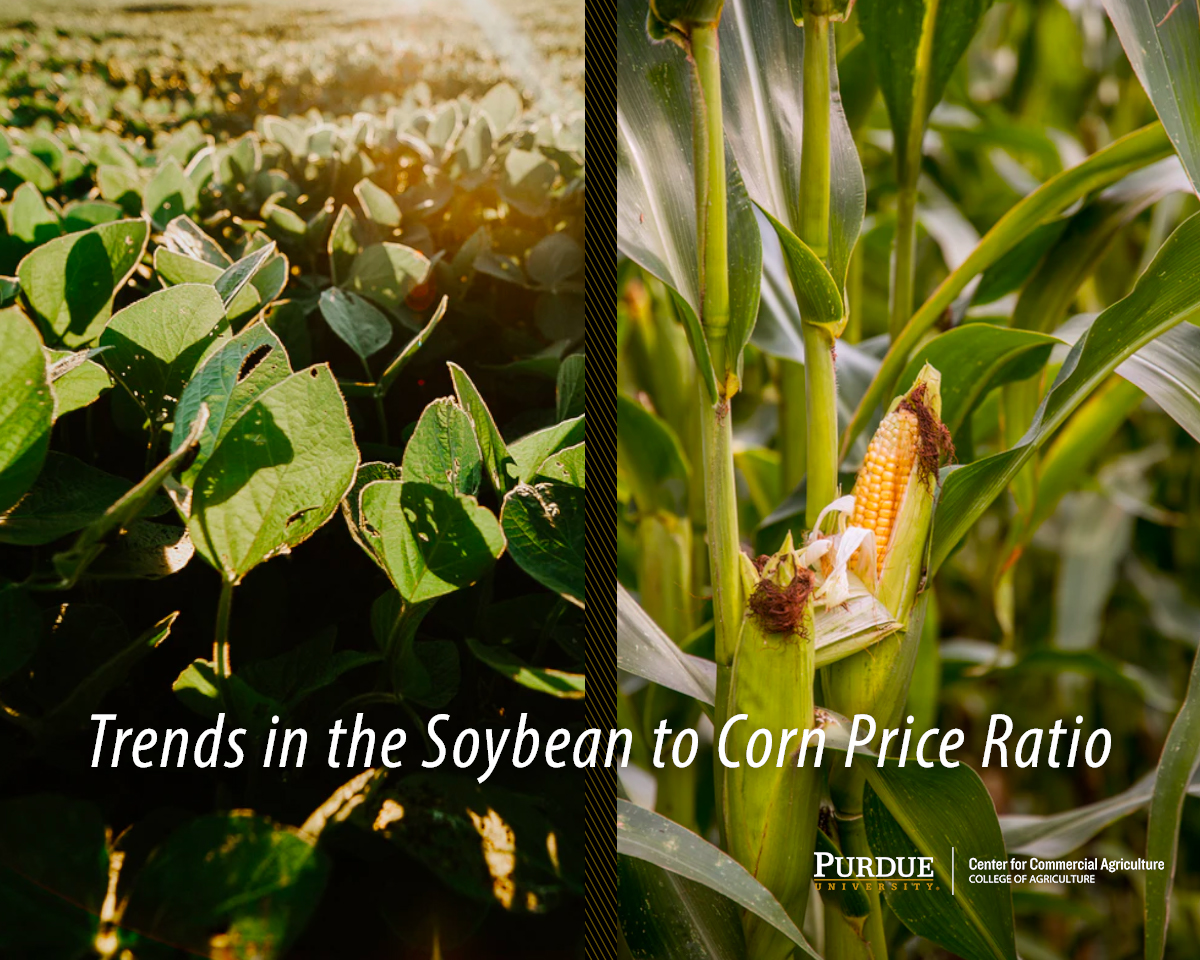January 27, 2020
Trends in the Soybean to Corn Price Ratio
by Michael Langemeier
Using Indiana cash prices reported by USDA-NASS, the average soybean to corn price ratio from January 2000 to December 2019 was 2.52. This ratio was quite variable in 2019 ranging from 1.93 in July to 2.37 in January. This leads to two important questions. How common or uncommon is it for this ratio to be substantially above or below the long-run average? Does a low or high ratio signal a change in the relative profitability between corn and soybeans? This article attempts to answer these two questions.
As indicated above, the long-run soybean to corn ratio for Indiana is 2.52. The standard deviation, a measure of dispersion, for this ratio is 0.35. In approximately 17 percent of the months since January 2000 the soybean to corn ratio has been less than its average minus the standard deviation (i.e., less than 2.17). Conversely, in approximately 17 percent of the months since January 2000 the soybean to corn ratio has been greater than its average plus the standard deviation (i.e., greater than 2.89).
The lowest soybean to corn ratio since January 2000, 1.91, occurred in August of 2011. The ratio in July of 2019, at 1.93, was close to this long-run low. The soybean to corn price ratio was below 2.00 for 15 of the last 240 months or approximately 6.4 percent of the months since January 2000. Specifically, this ratio was below 2.00 in December of 2006; February and March of 2007; April, June, July, August, November, and December of 2011; January, February, March, November, and December of 2012; and July of 2019. The highest soybean to corn ratio since January 2000, 3.46, occurred in July of 2004. The soybean to corn ratio was above 3.00 for 28 of the 240 months or approximately 11.9 percent of the months since January 2000. The ratio was above 3.00 from October 2003 to December 2003; from February 2004 to July 2004; from April 2005 to November 2005; from July 2009 to September 2009; November and December 2013; and from April 2014 to September 2014. Thus, the soybean to corn price ratio has not been above 3.00 since late 2014.
Now let’s take a look at recent trends. After being above the average ratio for a substantial portion of the months from 2014 to 2018, the soybean to corn price ratio has been below its long-run average ever since. A relatively low soybean to corn price ratio is a signal that corn may be more profitable than soybeans. As we move into the spring of 2020, it is important to examine the soybean to corn ratio. In addition, comparing relative production costs and yields for the two crops is also important.
This article examined trends in the Indiana soybean to corn price ratio. The average ratio since January 2000 is 2.52. The soybean to corn ratio has been relatively low since January of 2019. As indicated above, it is not that uncommon for the soybean to corn price ratio to be this low. However, a relatively low ratio does signal that corn may be more profitable than soybeans for the upcoming production season.

TAGS:
TEAM LINKS:
RELATED RESOURCES
UPCOMING EVENTS
We are taking a short break, but please plan to join us at one of our future programs that is a little farther in the future.




